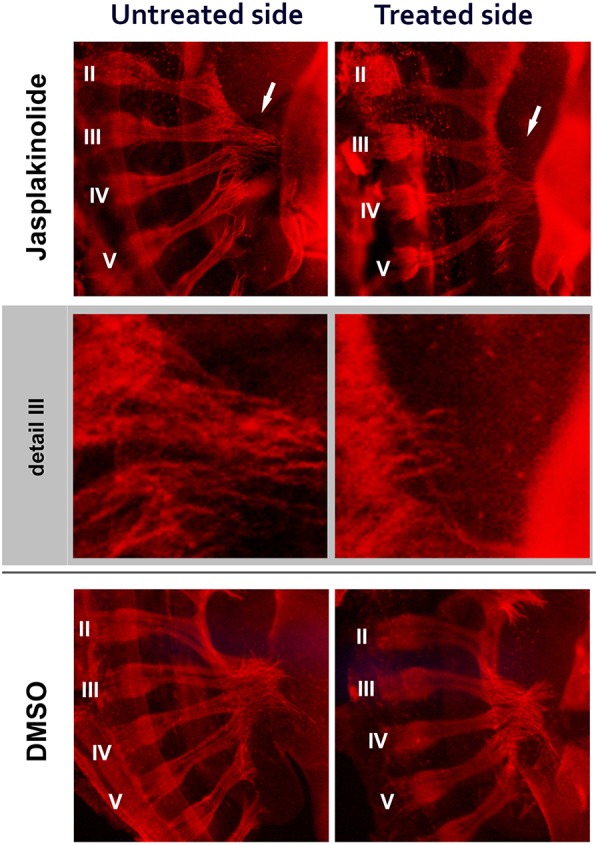Fig. 9.

Jasplakinolide addition to the developing chicken embryo can induce sciatic nerve guidance defects in vivo. Whole-mount immunohistochemistry for β-III tubulin 16 h after application of a microsponge containing 20 µg/ml jasplakinolide (or 2% DMSO vehicle) to one side of the HH stage 22-23 chicken embryo at the level of the hindlimb. The spinal cord roots are numbered from I to VI, where root I (not shown) is associated with the anterior femoral nerve and roots III-V contribute to the posterior sciatic nerve. Root VI is only associated with the sciatic nerve later in development. Addition of jasplakinolide induced neuronal defects in the hindlimb. Top row shows jasplakinolide-treated (right) and contralateral untreated (left) sides highlighting the loss of axons on the treated side, especially from rostral-most root III, which contributes to the peroneal nerve (arrows). Shaded in grey is detail from root III. The vehicle, DMSO, was used as a control treatment and no defects were observed (bottom).
